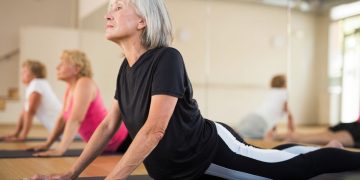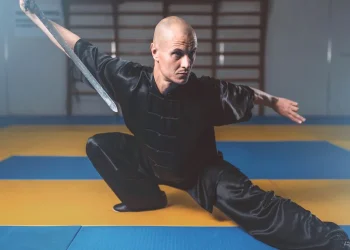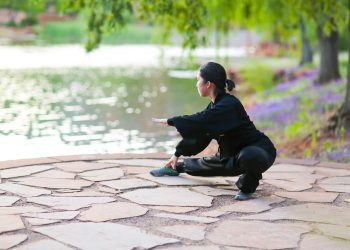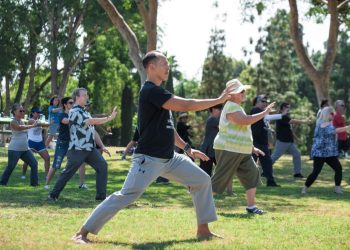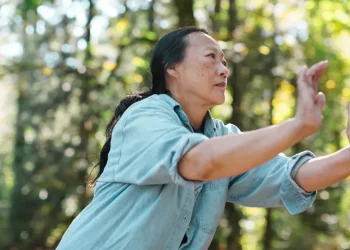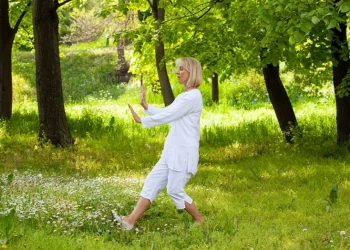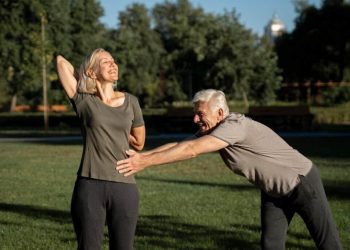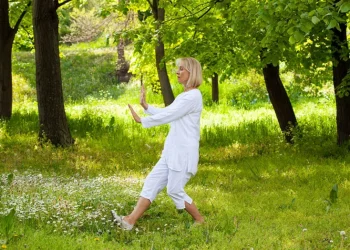In an age where fitness trends come and go with dizzying speed, one ancient practice continues to gain recognition for its profound benefits: Tai Chi Walking. This meditative movement practice, rooted in centuries-old Chinese martial arts traditions, offers a bridge between the contemplative stillness of meditation and the dynamic energy of physical exercise. But what exactly is Tai Chi Walking, and why are healthcare professionals, fitness enthusiasts, and wellness seekers increasingly turning to this gentle yet powerful practice?
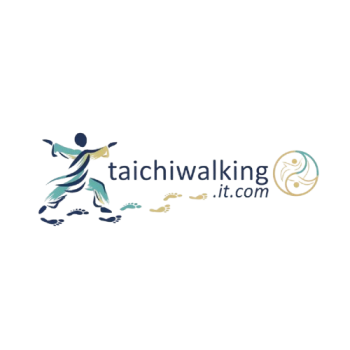
Defining Tai Chi Walking
Tai Chi Walking, also known as “Tai Chi Walking Meditation” or “Walking Qigong,” is a mindful movement practice that applies the fundamental principles of Tai Chi to the simple act of walking. Unlike regular walking, which most people perform automatically and without conscious thought, Tai Chi Walking transforms each step into a deliberate, meditative movement that integrates breath, body awareness, and mental focus.
At its core, Tai Chi Walking involves moving slowly and deliberately, coordinating each footfall with controlled breathing while maintaining specific postural alignments and mental awareness. Practitioners flow through space with a quality of movement that appears effortless yet requires significant concentration and body control. The practice emphasizes weight shifting, balance, rootedness to the earth, and the continuous flow of energy throughout the body.
Historical Origins and Context
To understand Tai Chi Walking, one must first appreciate the broader tradition from which it emerges. Tai Chi Chuan (often shortened to Tai Chi), which translates roughly as “Supreme Ultimate Fist,” is an internal Chinese martial art that developed over several centuries. While the exact origins remain somewhat obscured by time and legend, most historians trace Tai Chi’s development to the Chen Village in Henan Province during the 17th century, though some traditions claim even more ancient roots.
The legendary founder Chen Wangting, a retired general, is credited with synthesizing various martial arts techniques with traditional Chinese philosophy, breathing exercises, and energy cultivation practices to create what would become known as Chen-style Tai Chi. Over subsequent generations, the practice evolved into several distinct styles, including Yang, Wu, and Sun styles, each with its own characteristics and emphasis.
Tai Chi Walking emerged as practitioners recognized that the principles governing Tai Chi forms—the sequences of movements that constitute traditional practice—could be distilled and applied to the fundamental human activity of walking. This innovation made Tai Chi principles more accessible and portable, allowing practitioners to cultivate their practice anywhere, anytime, without requiring the space or time needed for complete forms.
The practice draws heavily from Taoist philosophy, particularly the concepts of yin and yang (complementary opposites), wu wei (effortless action), and the cultivation of qi (vital life energy). These philosophical foundations transformed simple walking into a profound practice for physical health, mental clarity, and spiritual development.
The Fundamental Principles
Tai Chi Walking rests on several core principles that distinguish it from both regular walking and other movement practices:
Mindful Awareness: Every aspect of the movement receives conscious attention. Practitioners observe the sensation of their feet contacting the ground, the shifting of weight from one leg to another, the positioning of the spine, and the flow of breath through the body. This heightened awareness transforms walking from an automatic activity into a moving meditation.
Slow, Deliberate Movement: Speed is intentionally reduced, often dramatically. What might normally take 30 seconds could extend to several minutes in Tai Chi Walking. This slowness isn’t laziness but requires tremendous muscular control and balance, as the body must support itself on one leg for extended periods during the weight transfer.
Continuous Flow: Unlike regular walking with its distinct starting and stopping of movements, Tai Chi Walking emphasizes seamless transitions. One movement flows into the next without breaks, creating a quality of continuity that mirrors the Taoist concept of constant change and transformation.
Weight Shifting and Balance: Practitioners learn to distinguish clearly between “full” (weighted) and “empty” (unweighted) legs. Before stepping, all weight settles into the supporting leg, allowing the other leg to become completely light and free. This principle, known as “separating full and empty,” is fundamental to all Tai Chi practice.
Rooting and Connection to Earth: Each step emphasizes the connection between the foot and the ground. Practitioners visualize roots growing from their feet into the earth, creating stability and drawing energy upward through the body.
Postural Alignment: Specific attention is paid to maintaining proper body structure: the head floats upward as if suspended by a string, the spine lengthens, shoulders relax downward, the chest remains slightly hollow, and the lower abdomen (called the “dan tian” or energy center) stays softly engaged.
Coordinated Breathing: Breath synchronizes with movement, typically inhaling during the gathering or preparation phase and exhaling during the extension or completion of a step. The breathing remains natural, deep, and abdominal rather than shallow and chest-based.
How Tai Chi Walking Differs from Regular Walking
The distinctions between Tai Chi Walking and ordinary walking are substantial, affecting every dimension of the activity:
Speed and Tempo: Regular walking occurs at a pace dictated by efficiency and purpose—getting from point A to point B. Tai Chi Walking deliberately slows to about one-tenth normal speed or even slower, making the journey itself the destination.
Consciousness Level: Most people walk while thinking about something else entirely, making it an unconscious, automatic activity. Tai Chi Walking demands complete present-moment awareness, making it impossible to walk while lost in thought about the past or future.
Movement Quality: Ordinary walking involves a falling-forward motion where the body essentially catches itself with each step. Tai Chi Walking maintains the center of gravity, moving it forward deliberately and smoothly without the rising and falling characteristic of normal gait.
Foot Placement: Regular walking involves a heel-strike pattern where the heel contacts first, then rolls through to the toes. Tai Chi Walking often uses a “stepping like a cat” approach, where the foot is placed down more uniformly, or in some styles, with the ball of the foot touching first, ensuring silent, controlled contact with the ground.
Purpose and Intention: Conventional walking serves primarily as transportation or exercise. Tai Chi Walking is a holistic practice aimed at cultivating physical health, mental clarity, emotional balance, and spiritual development simultaneously.
Muscular Engagement: Normal walking uses minimal conscious muscular control. Tai Chi Walking requires sustained engagement of deep postural muscles, particularly in the legs, core, and back, demanding significantly more strength despite the slower pace.
Modern Applications and Benefits
In contemporary society, Tai Chi Walking has found applications far beyond its martial arts origins:
Healthcare and Rehabilitation: Physical therapists and rehabilitation specialists increasingly incorporate Tai Chi Walking into treatment protocols for balance disorders, fall prevention in elderly populations, recovery from orthopedic injuries, and management of chronic conditions like Parkinson’s disease and multiple sclerosis. The practice’s emphasis on balance and body awareness makes it particularly valuable for these populations.
Stress Reduction and Mental Health: Mental health professionals recognize Tai Chi Walking as an effective mindfulness practice for anxiety, depression, and stress management. The moving meditation aspect makes it more accessible for people who find seated meditation challenging or restless.
Corporate Wellness Programs: Forward-thinking companies integrate Tai Chi Walking into workplace wellness initiatives, offering brief sessions during lunch breaks or incorporating walking paths designed for contemplative practice.
Athletic Training: Athletes in various sports use Tai Chi Walking to develop better body awareness, balance, and mental focus. The practice complements high-intensity training by providing recovery movement and teaching principles of efficient force generation.
Spiritual Practice: Many people embrace Tai Chi Walking as a spiritual discipline, using it as a form of moving prayer or meditation that connects body, mind, and spirit.
Pain Management: Research suggests that regular Tai Chi Walking practice can help manage chronic pain conditions by improving body mechanics, reducing muscle tension, and modulating pain perception through meditative awareness.
Practical Considerations for Beginners
For those interested in exploring Tai Chi Walking, the beauty of the practice lies in its accessibility. Unlike many fitness activities requiring special equipment or facilities, Tai Chi Walking can be practiced anywhere with a safe walking surface. However, guidance from an experienced instructor proves invaluable for learning proper principles and avoiding common mistakes like forcing movement or holding tension.
Beginners typically start with just a few minutes of practice, gradually extending duration as comfort and skill increase. Even five minutes of daily Tai Chi Walking can yield noticeable benefits in balance, stress levels, and body awareness.
Tai Chi Walking represents a profound transformation of one of humanity’s most basic activities into a practice for holistic wellness. By applying ancient wisdom to modern life, it offers a accessible path to better health, reduced stress, and deeper self-awareness. In a world that increasingly values speed and efficiency, Tai Chi Walking reminds us that sometimes the most powerful approach involves slowing down, paying attention, and moving through life with greater consciousness and grace.
Whether approached as physical therapy, stress management, spiritual practice, or simply as a more mindful way to move through the world, Tai Chi Walking provides benefits that extend far beyond the steps themselves. It teaches us that we don’t always need to rush to our destination—sometimes the walking itself is enough.
Trending Post
A Practical Guide to Tai Chi Walking Indoors
Latest story
A Comprehensive Guide to Tai Chi Walking Classes
Tai Chi walking, often called "Tai Chi ruler walking" or simply "walking meditation," represents one of the most accessible yet...
Qigong Walking: The Meditative Art of Moving Energy
In our fast-paced modern world, the simple act of walking has become something we rush through without a second thought....
Tai Chi Walking Vs Regular Walking: Finding Your Perfect Stride
Walking is often called the perfect exercise—accessible, free, and beneficial for nearly everyone. But not all walking is created equal....
Active Aging Exercises: Your Guide to Vitality, Independence, and Joy
Growing older is not about slowing down—it's about moving forward with intention, strength, and grace. The narrative around aging is...
Mobility Exercises For Seniors: A Practical Guide to Staying Active and Independent
Maintaining mobility is one of the most important factors in preserving independence, preventing falls, and enhancing quality of life as...
Popular posts
Recent Posts
- A Comprehensive Guide to Tai Chi Walking Classes
- A Practical Guide to Tai Chi Walking Indoors
- Active Aging Exercises: Your Guide to Vitality, Independence, and Joy
- Balance Exercises For Seniors: A Complete Guide to Stability and Fall Prevention
- Beginner’s Guide to Walking Meditation
- Chi Energy Walking: Cultivating Vital Energy Through Mindful Movement
- Fall Prevention Exercises: A Comprehensive Guide to Reducing Your Risk
- Gentle Exercise for Elderly: A Path to Health, Independence, and Joy
- Gentle Exercise For Elderly: Moving with Grace and Purpose
- Grounding Walking Exercises: A Comprehensive Guide to Connecting with Earth Energy



